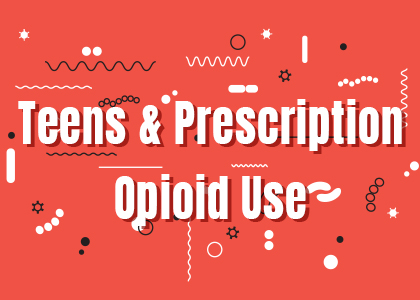Only 1 in 4 (24.4%) residential addiction treatment programs for teenagers across the US provide buprenorphine treatment, the “gold standard” for opioid use disorder (OUD), according to research published in the Journal of the American Medical Association (JAMA) on June 13, 2023. (1)
 Buprenorphine is the only pharmacological treatment approved by the US Food and Drug Administration for use in adolescents aged 16 years and older for OUD, yet JAMA research findings show that many residential treatment programs are unaware that buprenorphine is an option for adolescents. (1, 2, 3) “By comparison, nearly-two thirds of adult residential treatment programs offer buprenorphine.” Interestingly, based on the JAMA survey results equine therapy is found to be more commonly offered to adolescents in residential treatment programs, instead of buprenorphine, despite limited evidence on the efficacy of equine therapy for OUD. (1, 4) Other medications found to be available at treatment residential programs for teenagers included medication for psychiatric comorbidities (87.5% of sites), and naloxone (77% of sites) to reverse opioid overdose.
Buprenorphine is the only pharmacological treatment approved by the US Food and Drug Administration for use in adolescents aged 16 years and older for OUD, yet JAMA research findings show that many residential treatment programs are unaware that buprenorphine is an option for adolescents. (1, 2, 3) “By comparison, nearly-two thirds of adult residential treatment programs offer buprenorphine.” Interestingly, based on the JAMA survey results equine therapy is found to be more commonly offered to adolescents in residential treatment programs, instead of buprenorphine, despite limited evidence on the efficacy of equine therapy for OUD. (1, 4) Other medications found to be available at treatment residential programs for teenagers included medication for psychiatric comorbidities (87.5% of sites), and naloxone (77% of sites) to reverse opioid overdose.
While some critics believe that the increased availability of naloxone, through access laws and pharmacy distribution, may inadvertently promote high-risk substance use behaviors amongst teenagers, the evidence shows the contrary with a decrease in lifetime heroin and intravenous drug use amongst adolescents.(5) Nonetheless, the recent increase in adolescent opioid-related deaths is grim. From 2019 to 2021, the median monthly overdose death trends increased 109 % among persons aged 10–19 years, with approximately 90% of these deaths involving opioids, based on data obtained from the Division of Overdose Prevention, National Center for Injury Prevention and Control, CDC. (6)
Guidelines published by the American Society of Addiction Medicine (ASAM) indicate that adolescents often benefit from specialized treatment programs for OUD that offer multiple treatment modalities (e.g., holistic risk-reduction interventions, including naloxone distribution; education on overdose prevention; safe injection practices; risky behavior modification; and contraception access), however, more research is needed to identify which psychosocial treatments, alone and in combination with pharmacotherapy, are best suited for use with adolescents. (7) Limitations of the JAMA study includes that therapy types, other than buprenorphine, were not explicitly elicited during calls to the 160 residential treatment programs included in the survey, and this may have led to underreporting of other therapies. In addition, amongst the 354 treatment programs identified, 27 were unreachable by phone and other facilities not identified may have been excluded.
Study findings varied by geographical region, with 40.0% of treatment programs in the Northeast offering buprenorphine, compared to 18.0% in the West. Hence, with the recent disbursement of opioid settlement funds it is anticipated that the delivery of buprenorphine to teenagers in residential treatment programs should be possible across the Commonwealth of Massachusetts.
As of May 31, 2023 a total of $42,349,043 in opioid abatement payments have been made to Massachusetts cities and towns for opioid treatment, prevention, harm reduction, and recovery programs, from the nationwide settlement with opioid distributors and manufacturers. (8) However, in order to have access to these funds for the purposes for which they are intended, they must first be “appropriated” by the legislative body of each municipality, as described in the Opioid Settlement Guidance published by the Massachusetts Association of Health Boards (MAHB) on Jan 29, 2023.
For a copy of the above guidance — click on Opioid Settlements Guidance Document 1.24.23-RV1.
References:
- King C, Beetham T, Smith N, Englander H, Hadland SE, Bagley SM, et al. Treatments Used Among Adolescent Residential Addiction Treatment Facilities in the US, 2022. Jama. 2023;329(22):1983-5.
- Edwards E. Teens addicted to opioids may not get life saving treatment. Health News: NBC News; 2023.
- Weesner E, Konakanchi JS, Sethi R. Role of Buprenorphine in an Adolescent with Opioid Abuse. Kans J Med. 2022;15:197.
- Diaz L, Gormley MA, Coleman A, Sepanski A, Corley H, Perez A, et al. Equine-assisted services for individuals with substance use disorders: a scoping review. Subst Abuse Treat Prev Policy. 2022;17(1):81.
- Bruzelius E, Cerdá M, Davis CS, Jent V, Wheeler-Martin K, Mauro CM, et al. Naloxone expansion is not associated with increases in adolescent heroin use and injection drug use: Evidence from 44 US states. Int J Drug Policy. 2023;114:103980.
- Tanz LJ, Dinwiddie AT, Mattson CL, O’Donnell J, Davis NL. Drug Overdose Deaths Among Persons Aged 10-19 Years – United States, July 2019-December 2021. MMWR Morb Mortal Wkly Rep. 2022;71(50):1576-82.
- The ASAM National Practice Guideline for the Treatment of Opioid Use Disorder: 2020 Focused Update. J Addict Med. 2020;14(2S Suppl 1):1-91.
- Massachusetts Statewide Opioid Settlements, Municipal Opioid Abatement Payments as of 05.31.2023. Boston: Commonwealth of Massachusetts, Office of the Attorney General, Accessed on June 19 at URL: https://www.mass.gov/doc/9-opioid-payments-to-massachusetts-cities-and-towns-as-of-5312023/download; 2023.
 About the Author: Dr. Linda Marc is a consultant with expertise in the implementation of interventions for the prevention and treatment of opioid use disorders (OUD). She is the former National Implementation Director of a $21.3 million HRSA-funded initiative that implemented Buprenorphine Treatment, and Screening, Brief Intervention, and Referral to Treatment (SBIRT), an evidence-based intervention to identify, reduce, and prevent patterns of substance use (alcohol and other substances). Dr. Marc is currently CEO & Chief Science Officer of Behavioral Science International, LLC a public health consulting firm based in Massachusetts, and concurrently a core faculty member in the Quantitative Methods Program in the Department of Biostatistics at the Harvard T.H. Chan School of Public Health. She can be reached at <lindamarc@behavioralscienceintl.com> to consult on the implementation of prevention and treatment interventions for OUD.
About the Author: Dr. Linda Marc is a consultant with expertise in the implementation of interventions for the prevention and treatment of opioid use disorders (OUD). She is the former National Implementation Director of a $21.3 million HRSA-funded initiative that implemented Buprenorphine Treatment, and Screening, Brief Intervention, and Referral to Treatment (SBIRT), an evidence-based intervention to identify, reduce, and prevent patterns of substance use (alcohol and other substances). Dr. Marc is currently CEO & Chief Science Officer of Behavioral Science International, LLC a public health consulting firm based in Massachusetts, and concurrently a core faculty member in the Quantitative Methods Program in the Department of Biostatistics at the Harvard T.H. Chan School of Public Health. She can be reached at <lindamarc@behavioralscienceintl.com> to consult on the implementation of prevention and treatment interventions for OUD.


0 Comments